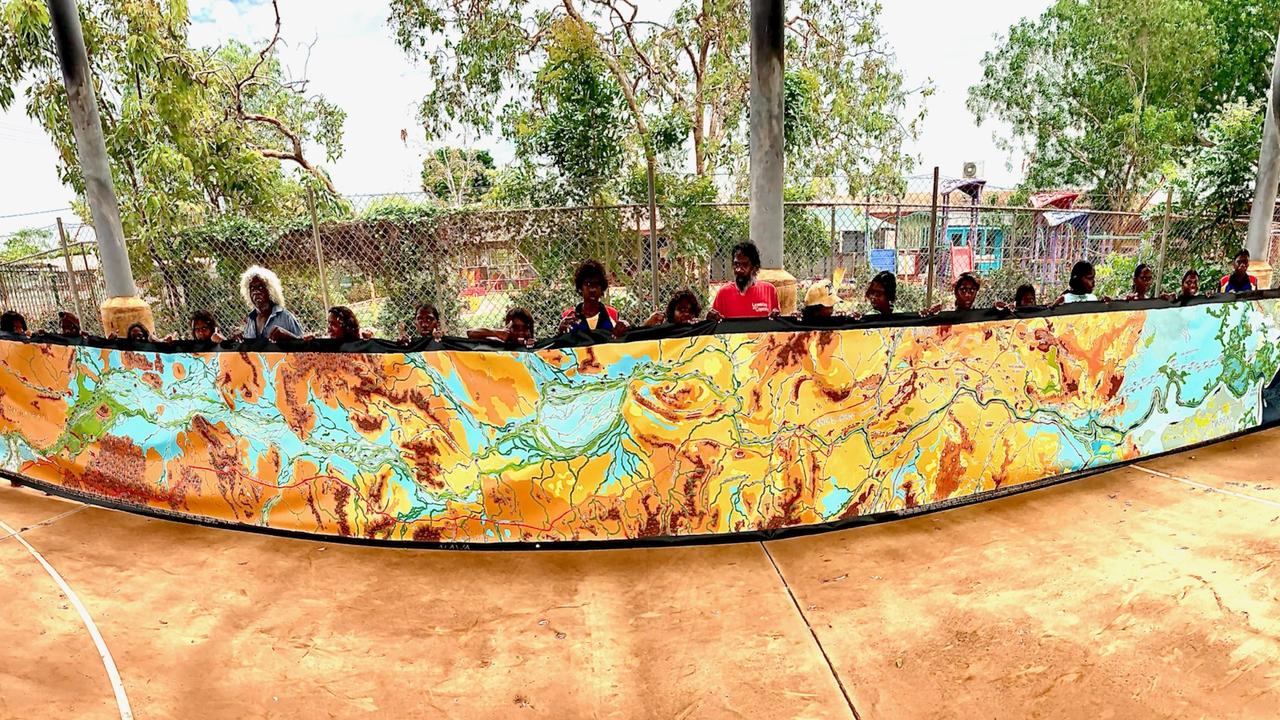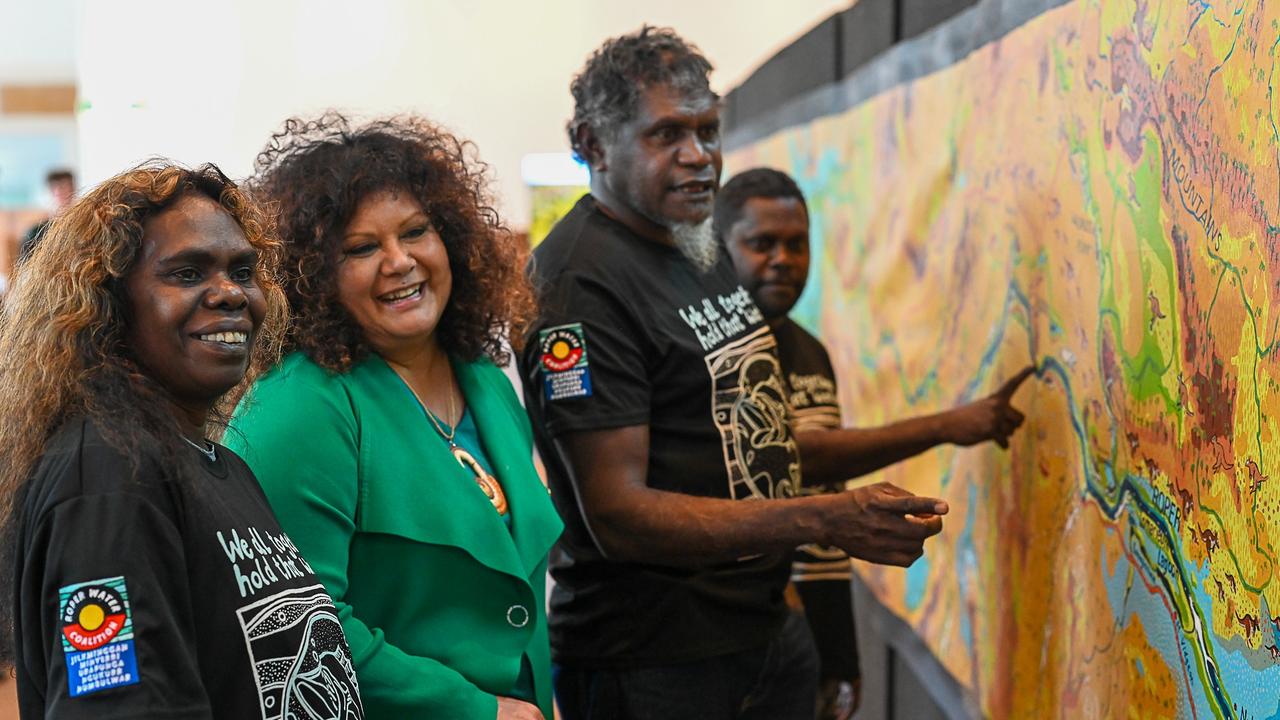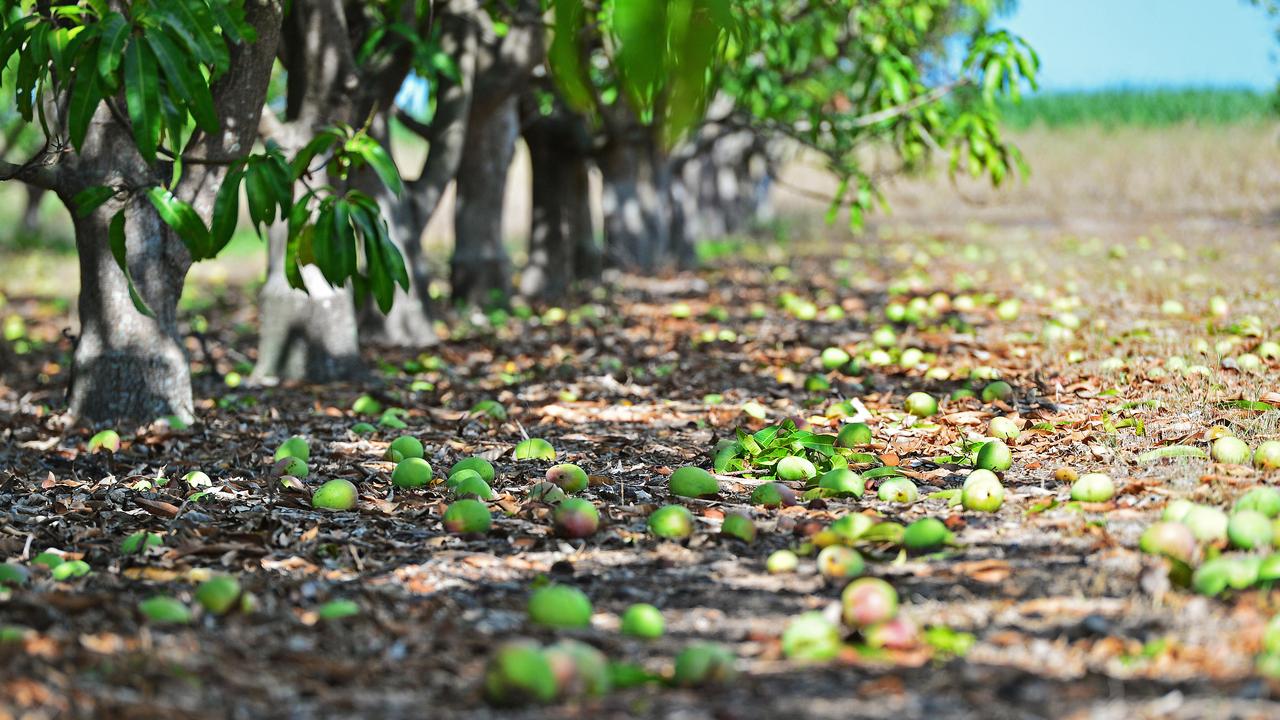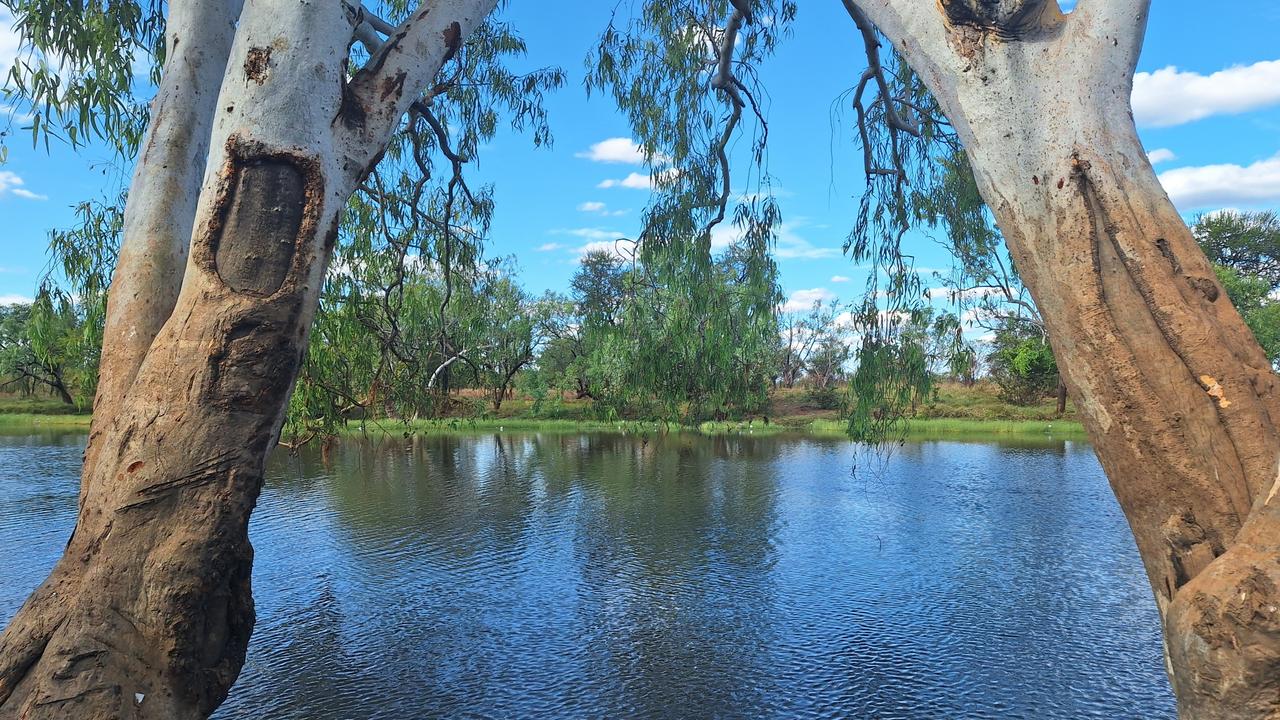Traditional owners, NT farmers, call for redraft of Mataranka Water Allocation Plan
A long anticipated plan to manage water in the Territory has ‘blatantly disrespected’ TOs, and could leave farmers out of pocket after a policy U-turn.

News
Don't miss out on the headlines from News. Followed categories will be added to My News.
A draft plan to manage water south of Katherine has been criticised by both farmers and traditional owners, who say it is failing to get the balance right between industry and the environment.
The Northern Land Council called for the draft Mataranka Water Allocation Plan to be rewritten, labelling it “appalling” and “blatantly disrespectful to the traditional owners who have been fighting for decades to protect the Roper River”.
The NLC said proposed “excessive” levels of water extraction risked sacred sites and the health of waterways including the iconic Mataranka hot springs.
It said the draft plan did not include enough information or any safeguards to ensure the rights and interests of Aboriginal people in the region would be met.

Late last year traditional owners from across the 20,000sq km Roper River region travelled to Canberra to present a 13m hand painted cultural map to parliament.
An accompanying statement said “all our Songlines follow the water”.
“If you take our water, you kill our culture. If you kill our culture, you kill our people,” it reads.
NLC Chair Matthew Ryan said the government continued to pursue short-term thinking and unsustainable planning around water.
“They are not going to walk over our people on this; there must be meaningful consultation,” he said.
“Countless submissions, the cultural map, statement – what will it take for them to listen?”

The peak body representing Territory farmers said it backed environmental and cultural stewardship, but said the government must do more to support growers after doing “a U-turn” on water allocation.

“They’ve almost declared a ‘no grow, no go’ zone in the southern zone of the Mataranka water plan which basically says that if you’re a farmer there, don’t expect any more water,” NT Farmers Association chief executive Greg Troughton said.
“Our main concern is we’ve got farmers that have worked hard to build up farms in that area, and now, in effect, they can’t go ahead with those plans.
“We need to have a conversation about compensation because these hard working farmers have developed this over many years under the existing water licensing regime, and the government’s doing a U-turn.”
Environment Minister Kate Worden said she was awaiting a brief from the department regarding public consultation for the draft Mataranka plan, which closed earlier this month.
“No decision has been made regarding the draft plan,” she said.

The Territory’s expanding cotton industry has been a growing focus of concern for water conservationists; a recent CSIRO Roper River feasibility study noting its largest-scale development scenario would involve a 66,000-fold increase in surface water harvested for irrigated agriculture.
Polling commissioned by the Territory Rivers alliance of its members found more than 80 per cent of Labor voters and 62 per cent of CLP voters were opposed to cotton expansion in the Top End.
“The cotton industry’s social license is getting weaker over time, which is at odds with government plans to allocate more water to them,” Territory Rivers’ Mitch Hart said.
“The message from Territorians is clear – this thirsty industry shouldn’t be allowed to expand operations in the Territory until they fix up their mess in the Murray-Darling Basin.”
NT Farmers said local cotton production today was “world’s best practice”, 95 per cent rain fed, and could grow to a $250m industry over the next decade.
More Coverage
Originally published as Traditional owners, NT farmers, call for redraft of Mataranka Water Allocation Plan









